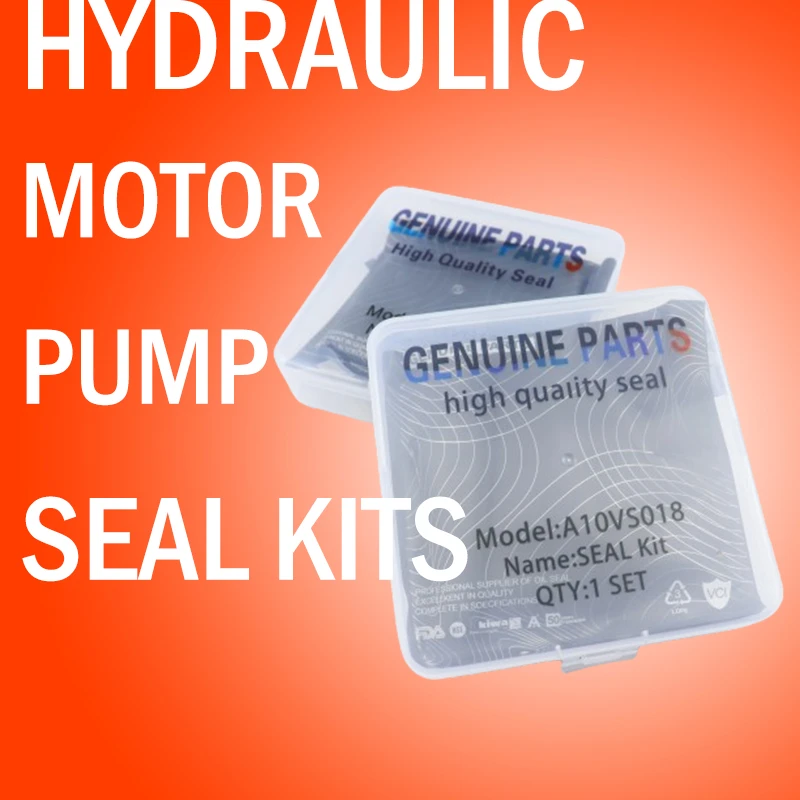Des . 26, 2024 17:39 Back to list
Hydraulic Seal Kit for Efficient Fluid Control and Machine Performance Enhancement
Understanding Hydraulic Seal Kits Essential Components for Efficient Operation
Hydraulic systems are integral to various sectors, including manufacturing, construction, and automotive industries. They rely on fluid dynamics to transmit power, converting hydraulic fluid's energy into mechanical work. A critical aspect of maintaining these systems is ensuring they are airtight and leak-proof, which is where hydraulic seal kits come into play. This article will delve into the significance of hydraulic seal kits, their components, and how to maintain them for optimal performance.
What is a Hydraulic Seal Kit?
A hydraulic seal kit is a collection of O-rings, seals, and gaskets specifically designed to prevent fluid leakage in hydraulic components such as cylinders, pumps, and valves. These kits are crucial for maintaining the integrity and efficiency of hydraulic systems, ensuring they operate smoothly under various pressures and temperatures. The design and material of seals vary according to the specific requirements of the application, making it essential to choose the right kit for optimal performance.
Key Components of Hydraulic Seal Kits
1. O-Rings These circular seals are the most common type of seal used in hydraulic systems. They are typically made from elastomeric materials such as nitrile, fluorocarbon, or silicone. O-rings are versatile and can be used in static and dynamic applications, providing an effective barrier against fluid leakage.
2. U-Cups Shaped like a 'U', these seals are designed to fit on the piston or rod of hydraulic cylinders. U-cups exert pressure against the sides of the cylinder, creating a tight seal and preventing hydraulic fluid from escaping. They are especially useful in rod sealing applications.
3. Back-up Rings These are used in conjunction with O-rings to prevent extrusion or failure of the O-ring under high-pressure conditions. Back-up rings serve as a support for the O-ring and enhance the overall sealing capability of the assembly.
4. Gaskets Gaskets are flat seals used to fill the space between two mating surfaces, preventing leaks between flanged connections. They come in various materials, including rubber, metal, or composite, depending on the application's requirements.
5. Custom Seals Some applications may require custom-designed seals to meet specific dimensional and performance criteria. Many manufacturers can produce bespoke seal kits tailored to unique hydraulic systems.
Importance of Hydraulic Seal Kits
Hydraulic seal kits play a vital role in several areas
hydraulic seal kit

- Preventing Leakage They provide a reliable barrier against fluid leakage, preventing loss of hydraulic fluid and minimizing environmental contamination.
- Enhancing System Efficiency Leaks can lead to a drop in pressure, causing hydraulic systems to work harder to maintain performance, which can result in increased energy consumption and costs. Proper sealing helps maintain efficiency.
- Extending Equipment Life Seals that fail can cause significant damage to hydraulic components, resulting in costly repairs or replacements. By ensuring proper sealing, hydraulic seal kits help prolong the life of the equipment.
- Safety Leaks in hydraulic systems can pose safety hazards, including fire risks and operational failures. Proper seals ensure safe operation by minimizing these risks.
Maintenance of Hydraulic Seal Kits
To ensure the longevity and functionality of hydraulic seal kits, regular maintenance is crucial. Here are some essential tips
- Inspection Regularly inspect seals for wear, cracks, or damage. Early detection of issues can prevent costly repairs.
- Cleaning Keep hydraulic components clean to avoid contamination. Contaminants can deteriorate seals and lead to premature failures.
- Proper Installation Ensure seals are installed according to the manufacturer's specifications. Improper installation can lead to early failure.
- Monitoring Operational Conditions Keep an eye on operating temperature and pressure conditions. Extreme variations can affect seal performance and lifespan.
Conclusion
Hydraulic seal kits are essential for the smooth and efficient operation of hydraulic systems. By understanding their components and ensuring their proper maintenance, operators can enhance the reliability and longevity of their hydraulic equipment. Investing in quality seal kits and adhering to maintenance best practices will ultimately lead to improved performance and reduced operational costs.
-
The Trans-formative Journey of Wheel Hub Oil Seals
NewsJun.06,2025
-
Graphene-Enhanced Oil Seals: Revolutionizing High-Pressure Oil Sealing
NewsJun.06,2025
-
Future of Hydraulic Sealing: Advanced Intelligent TCN Oil Seals
NewsJun.06,2025
-
Don’t Let a Broken TCV Oil Seal Ruin Your Day
NewsJun.06,2025
-
Bio-Inspired Dust Seals for Better Sealing Performance
NewsJun.06,2025
-
Biodegradable and Sustainable Hydraulic Seal Materials
NewsJun.06,2025
-
Top Oil Seal Solutions for Your Industrial Needs
NewsMay.22,2025
Products categories
















